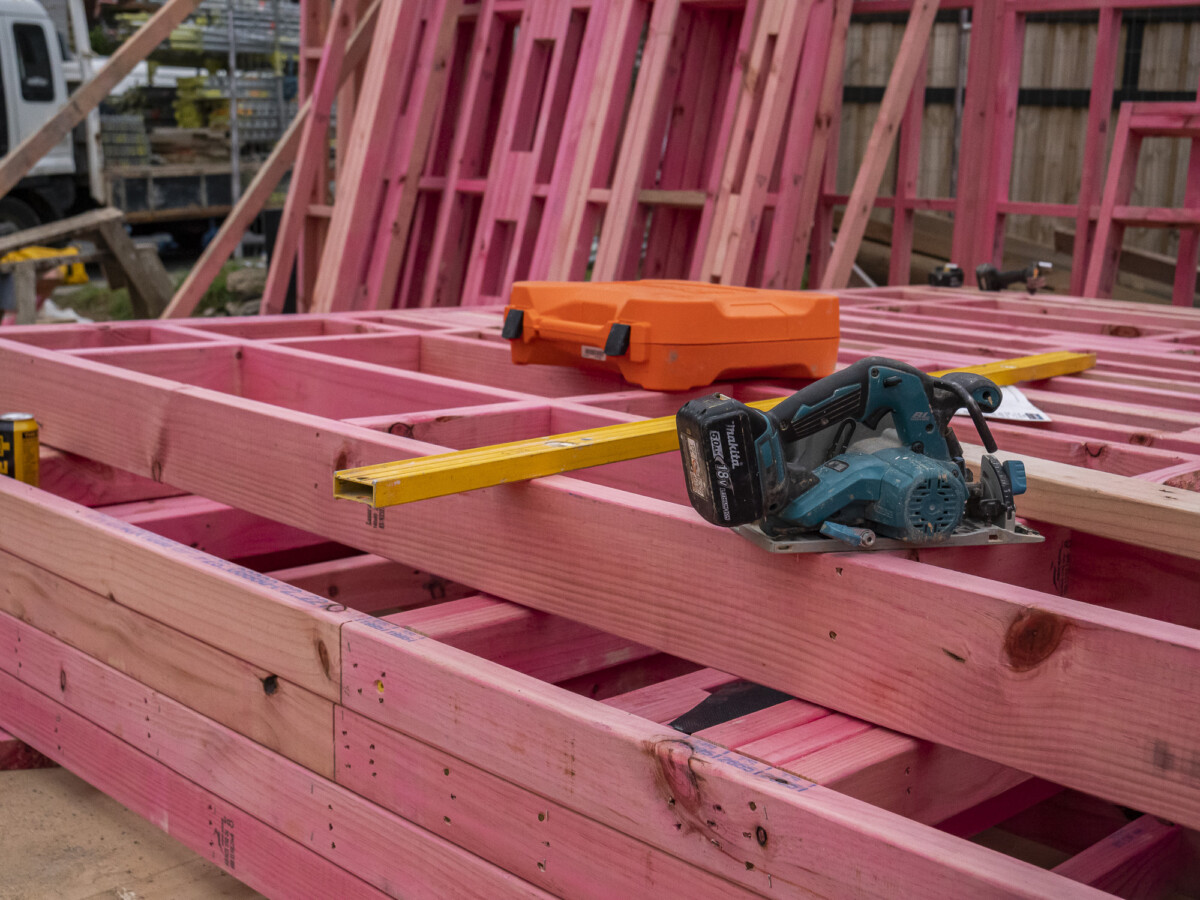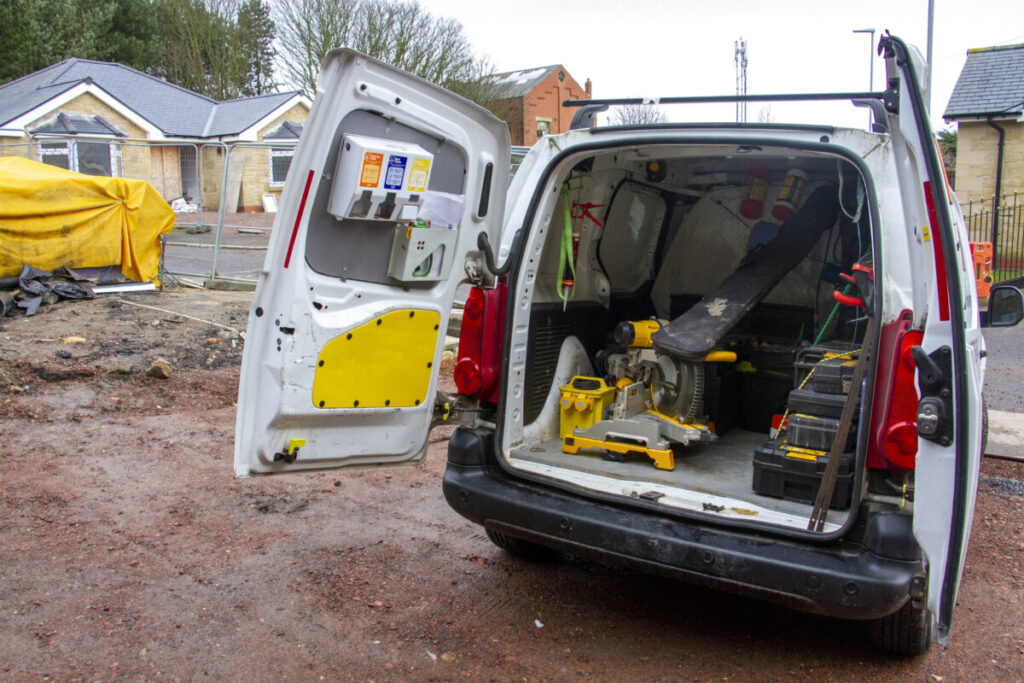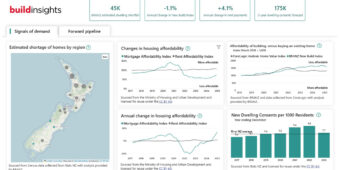Reduce your risk of tool theft
25 Jan 2024, Insurance, Learn, Prove Your Know How

Tools are expensive – and that makes them an attractive target for thieves. Insurance expert Ben Rickard is here to discuss how you can reduce the risk of theft
Tool theft is increasingly common and, if it hasn’t happened to you yet, you’ve probably heard of it happening to someone you know. We’re urging all builders to take extra measures to secure their tools.
What can you do?
Follow/choose from these simple tips and options:
1A. Prevention of theft from site
- Keep items on site only when absolutely needed.
- Keep tools and equipment secured in heavy-duty lockable containers when stored onsite. Check out armorgard.co.nz for some good options.
- Don’t leave tools in the open, where they have a higher chance of tempting opportunist thieves.
- Mark your tools in a highly visible way as a deterrent to theft.
- Install motion-sensing cameras, alarms and/or lights that will notify you or a monitoring service of any activity.
1B. Prevention of theft from vehicles
- Secure trailers with a towball lock and/or wheel clamp, so they can’t be stolen (with all your tools on board).
- Don’t park your vehicle on the street unattended and loaded with tools (and always lock it)!
- Install Armorgard-style secure drawers or boxes in your vehicle. These are a great deterrent to opportunist thieves.
- Fit your vehicle with an anti-tampering alarm.
- Place stickers on your vehicles, warning that power tools stored inside are marked and GPS tagged. Contact ben@builtin.co.nz for free stickers.

2. Tracking
- Install GPS tracking chips
3. Replacement/Recovery
- Keep a register of your tools. This will help the Police if they are recovered, as well as making an insurance claim much quicker. There are useful apps to help you do this, such as hoist.world or toolprotect.com.au, although a simple Google Sheet can do the job just as well. The information that should be recorded includes:
- Tool description.
- Serial number.
- Date of purchase.
- Cost.
- Where purchased.
- Record copy of receipt/ invoice.
- Photo of item.
- Engrave your tools with your mobile, driver’s licence or LBP number as an identifier. This is how the Police are able to connect recovered tools with their rightful owners, it can also act as a deterrent for opportunist theft in some cases.
- Use tracking technology, such as SelectaDNA selectadna.co.nz.
- Make sure you have good tools insurance. The key considerations are:
- Replacement value cover (new for old regardless of age).
- What the burglary and theft excesses are.
- Is theft from vehicles covered?
- Is the claim process going to be quick and easy?
Tools insurance
Premiums are not as expensive as you may think, although the current high volume of claims is putting pressure on rates. Here are our top tips to make sure you’re getting the cover you need:
If your tools are stolen, for a claim to go smoothly, you will need to provide:
- A completed claim form (easy).
- Police acknowledgement (easy).
- Proof of ownership of the stolen items (easy, if you have done the work up front to record all this).
- Quote to replace them (easy).
The biggest reason for a delayed payment for a tools claim is the time it takes for the policyholder to try and dig up proof of ownership, so if this is taken care of in advance, the process is very quick and easy.
Replacement value vs indemnity value
Replacement value cover will replace stolen items with brand new ones, regardless of their age or condition when pinched. Beware, some policies that claim to be for replacement value will revert to market value on items more than a few years old, so check the fine print. With indemnity value policies, you’ll only get what the item was worth when it was stolen (eg, its depreciated value) and you have to make up the difference.
Trailers
These should be insured as commercial vehicles; they can’t be insured under a tools policy.
Theft vs burglary
Tools policies make a distinction between theft and burglary. Theft is generally considered to be when an item is stolen “in the open air” – that is, without any sign of forced entry. So, it would be considered theft if tools were stolen from an unlocked van or site but burglary if locked doors were forced or a window smashed to gain entry. Some policies include burglary but not theft in the open air and you need to understand what you’re getting.
Cover for tools in vehicles
Some policies increasingly exclude cover for theft from a vehicle. This can be an issue, because often vehicles have to be accessed by multiple workers throughout the day, so they tend to stay open or unlocked while onsite. Builtin’s tools cover allows for this.
Know your excess
Even if your policy does include theft in the open air, theft excesses can differ. The policy might advertise a $500 excess, but it’s common to see a $1,000 excess for burglary and $2,500 for theft. You can find policies with options for lower excesses. Builtin has a $1,500 excess for theft. Builtin’s burglary and theft excess drops to $500 if an Armorgard secure storage box is installed.
In a nutshell
Having your tools stolen can be a massive inconvenience, cause delays and cost money. Taking preventative measures, keeping good records and having the right insurance cover will ensure that if something does happen, you can get back to work quickly and not be out of pocket. You can get an instant quote for tools cover at: builtininsurance.co.nz/tools.

Builtin are New Zealand’s trade insurance experts. For more information visit www.builtin.co.nz, email Ben Rickard at ben@builtin.co.nz or call him on 0800 BUILTIN.
Register to earn LBP Points Sign in
4 Comments
Leave a Reply
You must be logged in to post a comment.




Great
bloody annoying
It’s a kick In face when this happens, I’ve had all my gear stolen twice, you hold a lot of value in your vehicle, it takes a long time to get your kit back if you don’t have insurance
Good article